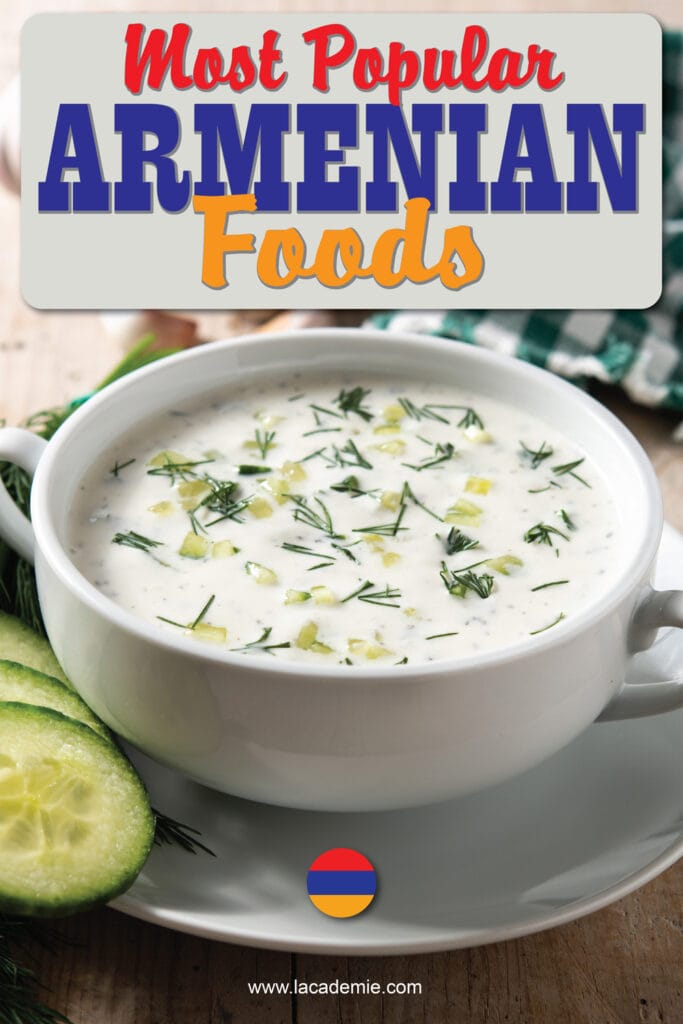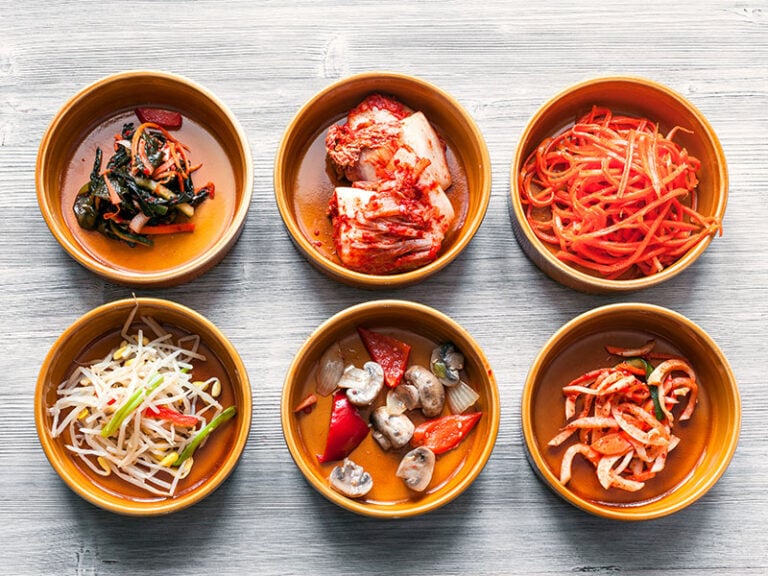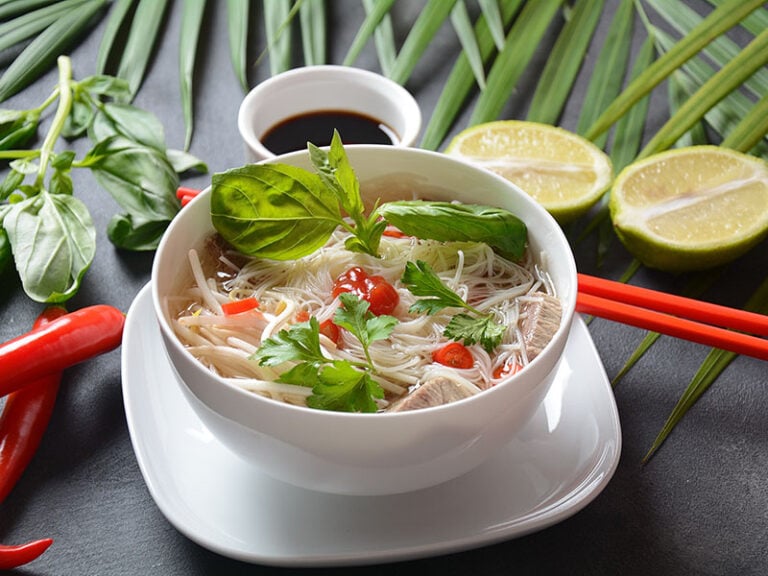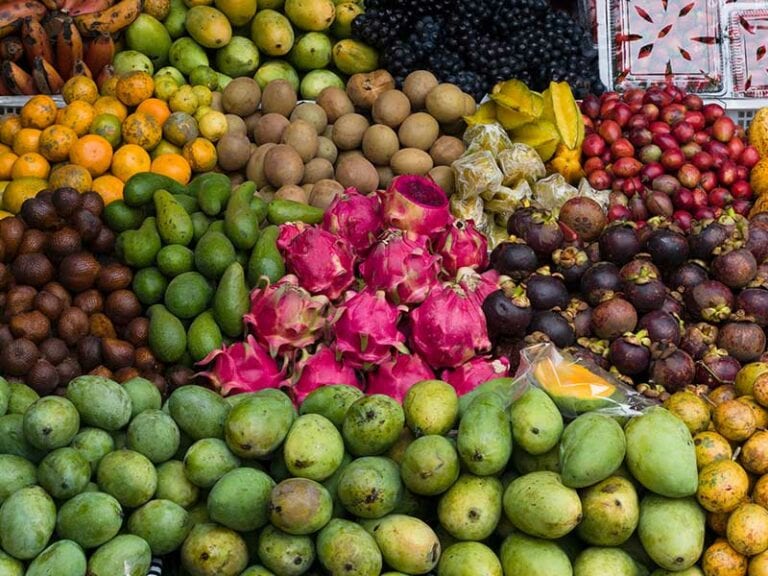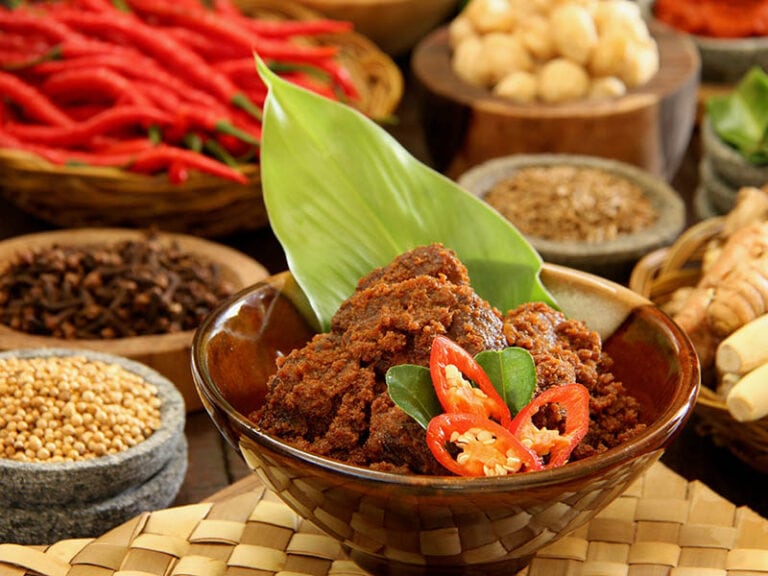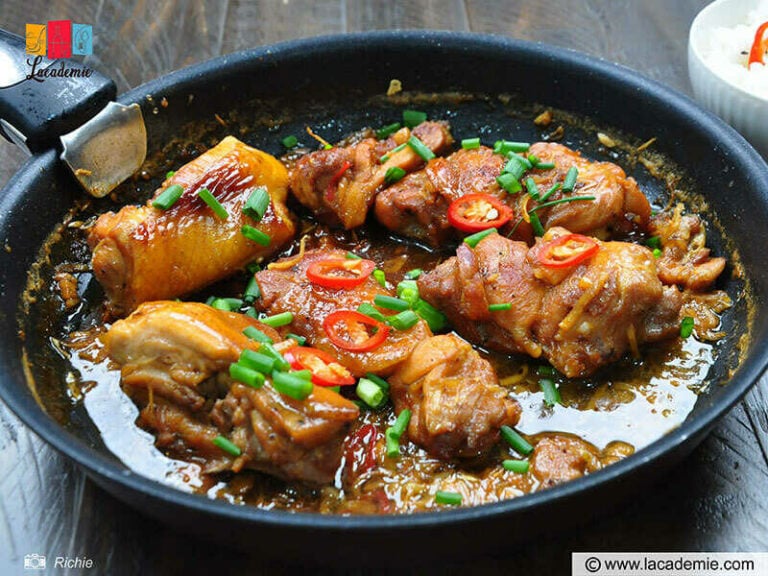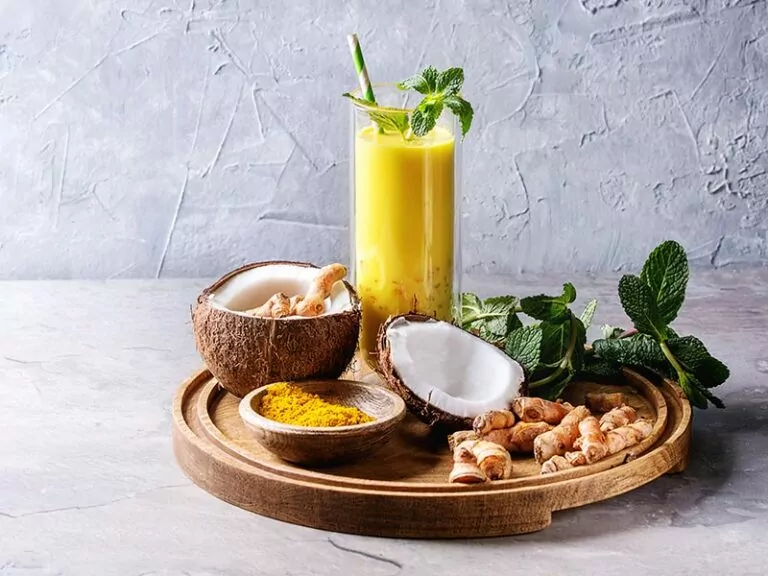Armenian cuisine or Armenian foods are a broad and diverse field that will be worth knowing. You will be amazed by how colorful this gastronomy offers.
The civilization of Armenia is one of the oldest in Transcaucasia, and this is evident in the country’s traditional cuisine. Armenian cuisine learns, integrates, and adjusts the beauties of other cultures while preserving conventional cultural values.
All of them combined to create identifiable unique features that are ready to be discovered.
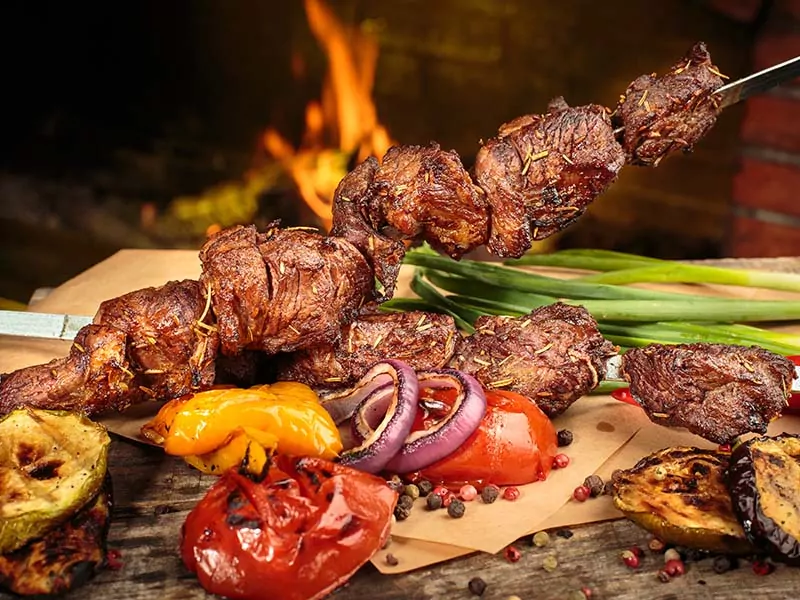
Armenian Cheese Products and Dairy-Based Dishes
Cheeses and various dairy products have been consumed daily in Armenia and are considered a mainstay of Armenian gastronomy. You should refer to these promising suggestions.
1. Chanakh Cheese
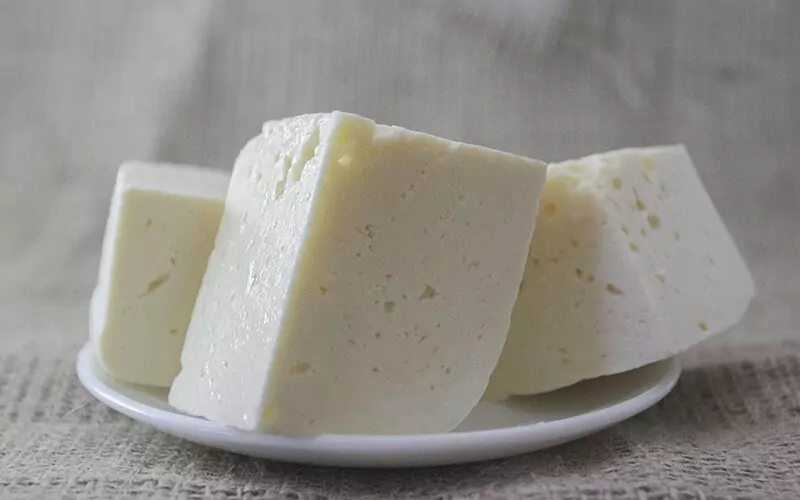
Let’s start the category with a traditional Armenian soft, brined cheese! If you are familiar with the signature white, soft cheeses from the Mediterranean cuisines, this Chanakh from Armenia will surely remind you of them.
Chanakh was first created in Armenia centuries ago by the local shepherds. With the use of sheep or cow milk, Chanakh cheese offers a brittle texture as well as salty, slightly spicy, fresh, and neutral tastes.
The most suggested way to eat Chanakh cheese is to serve it as an appetizer besides fresh fruits, wines, or veggies.
Since the cheese is quite famous globally, you can easily find it sold in vacuum packages in various markets. That’s a convenient way to have an experience of Armenian delicacy in your own house.
2. Lori Cheese
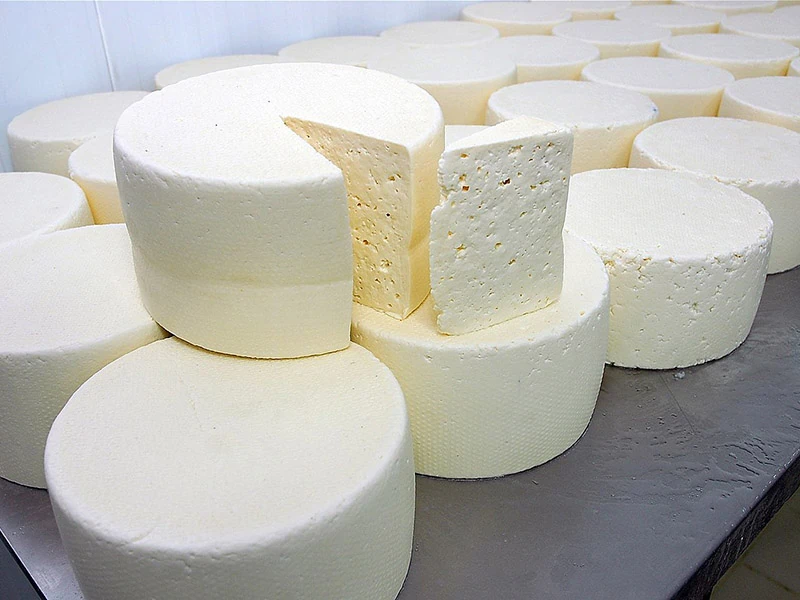
Lori cheese, just like previous Chanakh cheese, is a well-known Armenian table cheese that has long been cherished by cheese enthusiasts worldwide. Overall, the cheese is known for its yellow-whitish color. To learn more about its uniqueness, you must delve deeper.
Unlike Chanakh cheese, Armenian Lori cheese is relatively firmer (since the curd to make Lori cheese needs to be cooked twice). This cheese dish from Armenia appeals to everyone trying it with its elastic texture alluring creamy and robust salty tastes.
Lori cheese has its name since it was made in the Lori region (in the North of Armenia), and people there preserve their distinctive cheese recipe from generation to generation.
3. Matzoon/Matsun (Armenian Strained Yogurt)
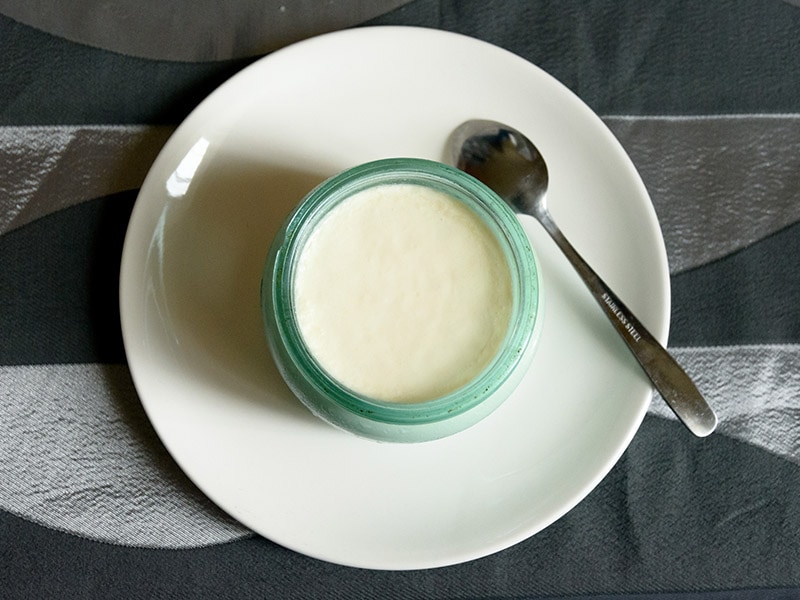
Besides cheese, yogurt is also a widely-favored dairy product, and Matzoon is the most beloved. Like other familiar kinds of strained yogurt, the texture of this Armenian-originated Matzoon is a relatively dense and thick consistency.
The first record of this Armenian thick, strained yogurt was written by Grigor Magistros in the 11th century. This variant of yogurt can be made out of almost every kind of milk. Besides cow milk, Armenian people also use goat, sheep, and buffalo milk or some milk mixtures.
The idea of having Matzoon with some fruit oats as a light Armenian-style breakfast will totally be fine. One thing you should be mindful of is choosing the right Matzoon in the markets.
In Japan, there is a kind of yogurt called “Caspian Sea yogurt” that seems similar to the Armenian Matzoon at first sight but is actually totally different.
4. Tahn/Tan (Armenian Yogurt-Based Drink)
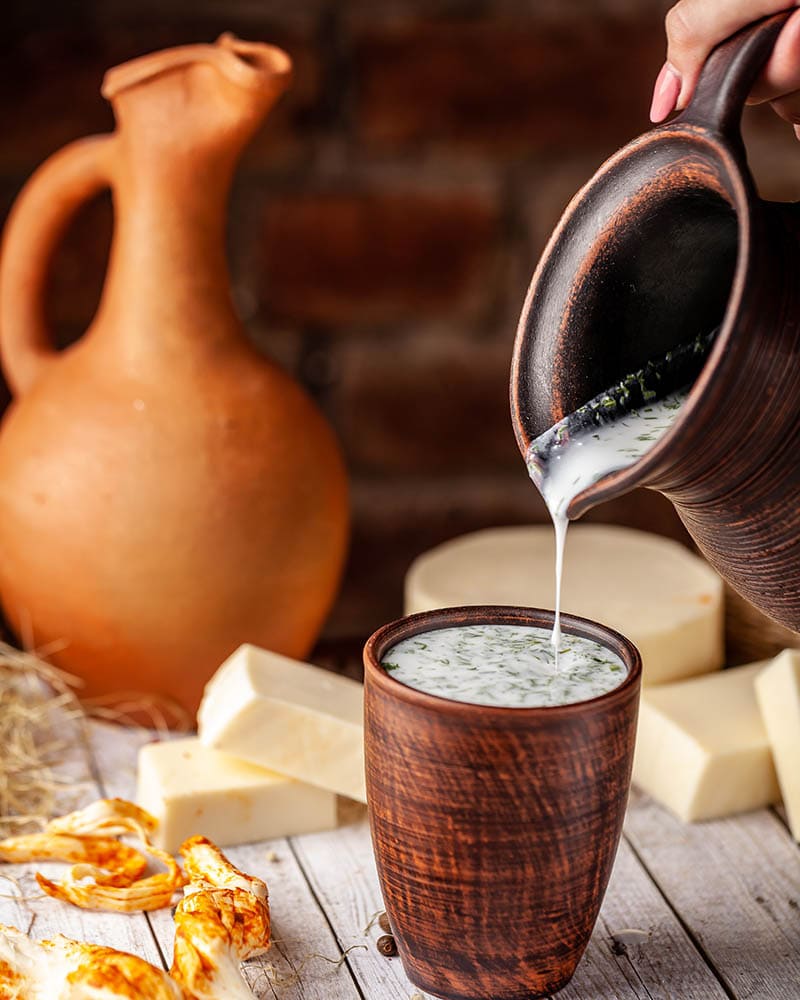
This distinctive Tahn/Tan will amaze you if you have never tried savory yogurt. The recipe to create it is pretty simple. A standard glass of Tahn calls for only yogurt, salt, water, and some optional components (herbs and cucumber juice).
Although its processing steps are straightforward, you should never underestimate this chilled yogurt drink. The soothing and refreshing drink will run down your throat like a stream of cool water with a more enjoyable taste.
You can find its variations in various neighboring countries, and each of them has a distinguished name. For example, some of the varieties are Ayran (Turkey), Dhallë (in Albania), or Doogh (Iran).
5. Spas (Yogurt Soup)
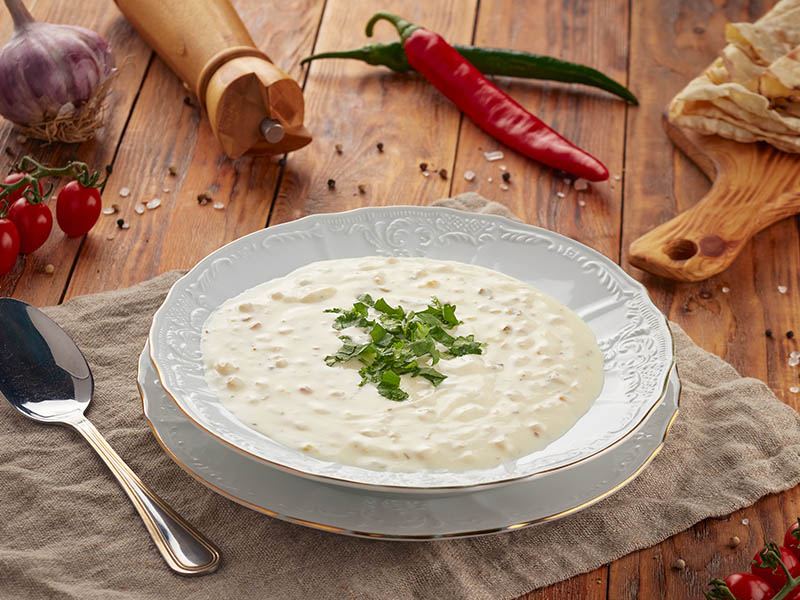
Spas is not a drink, it is a famous yogurt soup that you should never miss out on when traveling Armenia. The soup is made of yogurt (Matzoon) and soft wheat berries, rice, or hulled wheat, making it light enough to consume in any season.
Spas can be a refreshing dessert for hot summer days or a heart-warming treat on cold winter nights. To prevent the soup from forming curd, some eggs or egg yolk will typically be put into the soup and cooked in a pot before serving. How flavorsome!
Armenian Breads and Dumplings
Bread is an essential food in various cuisines, and Armenian gastronomy is not an exception. Let’s find out what the recommendations are!
6. Nshkhar (Holy Mass Specialty)
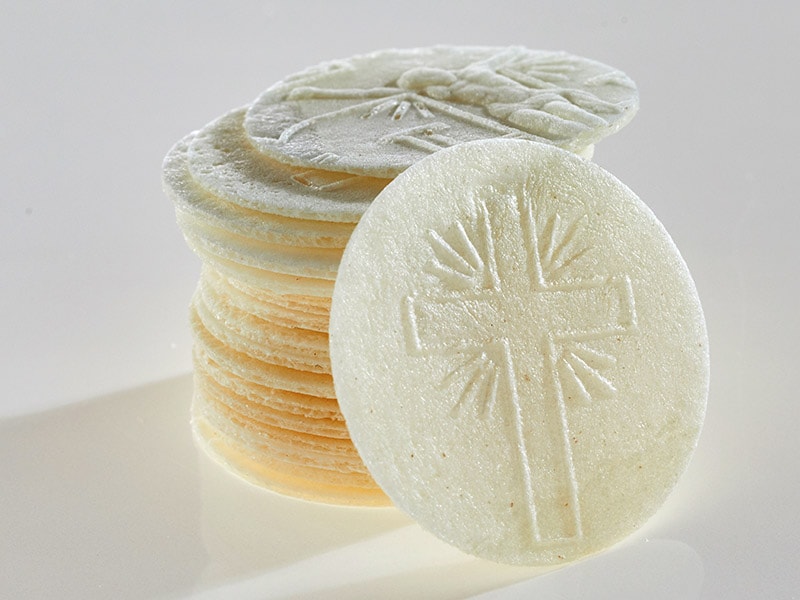
Nshkhar, with its trademark small size, resembles cookies, but it is regarded as a festive Armenian bread. This dessert will be given to churchgoers in Armenia following the hallowed Holy Badarak.
In the Armenian church, Nshkhar is also known as Communion bread. Since the food’s sole components are bread and water, Nshkhar is created to provide a meaningful delight rather than something that tastes amazing.
7. Lavash (Unleavened Flatbread)
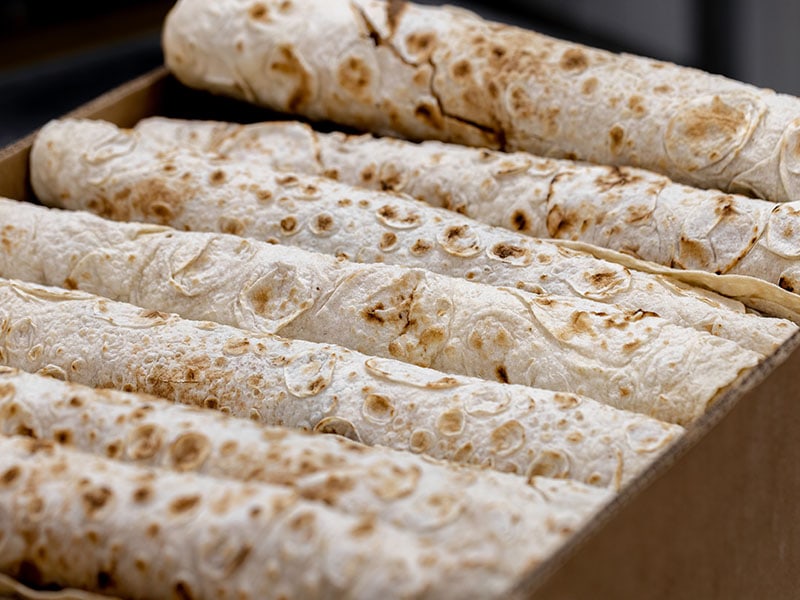
Lavash is a yeastless flatbread consisting of only wheat flour and water that has become an indispensable bread in Armenian cuisine. It attends every home dining table and becomes a long-term staple in their lifestyles.
What about matching it with Armenian dinner delicacies? Totally great! The king flatbread of Armenia is often baked in a saj (flat metal pan) or tonir (metal round pan) (a traditional oven that looks like a tandoor).
Sprinkle some sesame seeds to add extra taste. It’s best to enjoy this flatbread with sweet treats (jams), butter, or any savory Armenian stews.
This is a complete introduction and a taste test of Lavash bread for you!
8. Matnakash (Leavened Flatbread)
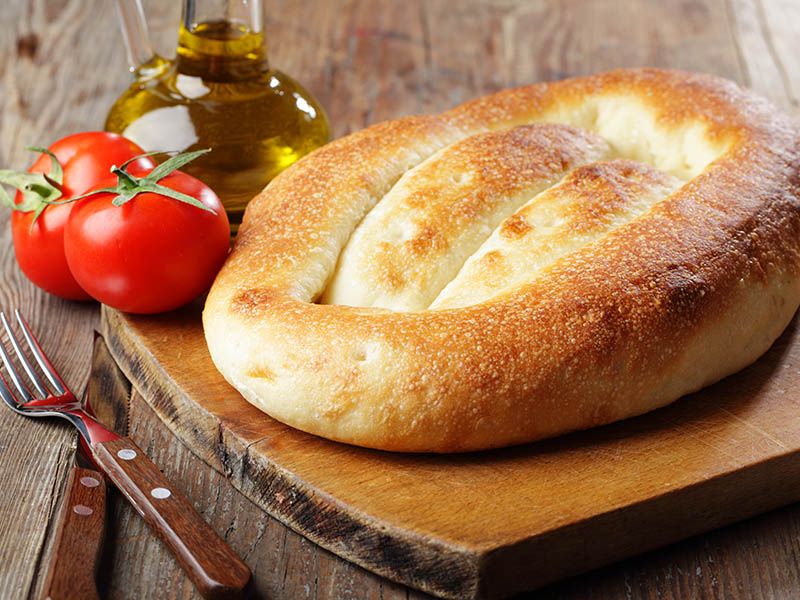
Matnakash means “finger-pull” or “finger draw” because its differentiated ridges/rims on the surface. Unlike the previous Lavash, which can be made both leavened or unleavened, Matnakash is a typical leavened wheat-made bread and usually formed into round shapes.
To talk about the exciting history of this iconic type of bread, I have to travel back to the 1930s when Armenia still belonged to the Soviet Union. To celebrate the birth of the new Communist country, the bakers tried to create an innovative bread.
They then made bread representing an agricultural field with rims/ridges referring to the tilled rows. The treat was loved, mass-produced, and became a favorite delicacy from that point onward.
The way to enjoy this kind of flatbread is also fascinating. Armenian people will put thin layers of sugary tea on the bread’s crispy, light brown crust before baking. After that, they will serve the bread with savory soupy treats or some favorable dipping sauces.
9. Choreg/Chorek (Easter Bread)
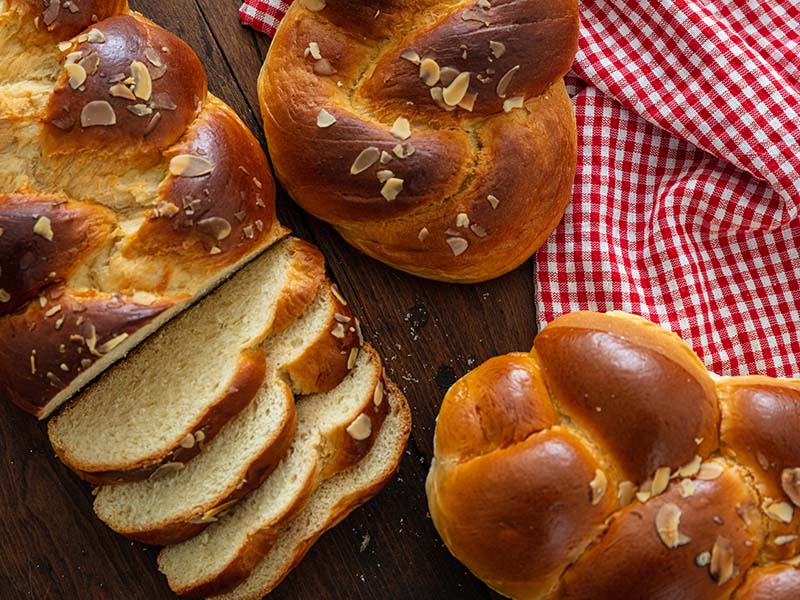
There are two ways to call this food in Armenia, Choreg or Bsatir. The older name, Bsatir, refers to the crown with spines of Christ. The cooks will coat the bread’s crust with a thin layer of eggs to turn darker after baking which represents the blood of Christ.
Choreg can become a gift for other people during Easter, and sometimes, Armenian people will give this bread as a present for their godfathers. Instead of preparing dyed Easter Eggs, Armenian people will make this braided bread.
Choreg and how it is made will be revealed here!
10. Zhingyalov Hats/Zhengyalav Hatz (Stuffed Flatbread)
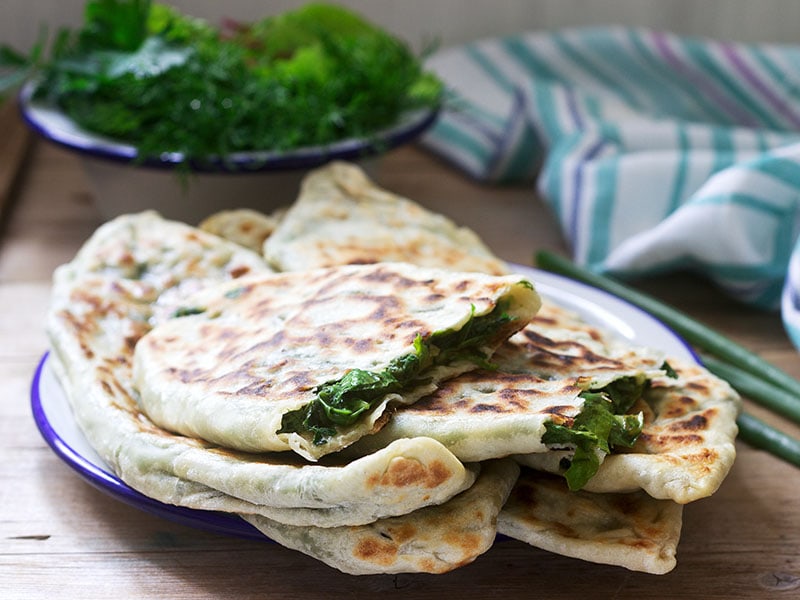
Zhingyalov Hats or Zhengyalav Hatz is a vegetarian-friendly, stuffed flatbread usually prepared for Lent. This kind of fried bread is a specialty of Artsakh (in Southeast Armenian Highlands), and you can still find it year-round (besides Lent).
The Armenians will make the regular flatbread with the common ingredients (flour, sour cream) and the stuffing mixtures consist of various vegetables. One notable thing about this dish is each piece of Zhingyalov Hats needs 10 to 40 types of herbs.
Those herbs include coriander, green garlic, nettle, kdzmdzuk, green garlic, nettle, spring onion, Capsella, chickweed, mint, and sorrel. Other types of herbs can be used in different variations.
This might be the secret behind the treat’s deliciousness. After doing all the preparation, the bread will be fried until seared and make you drool.
11. Gata/Kata (Sweet Bread)
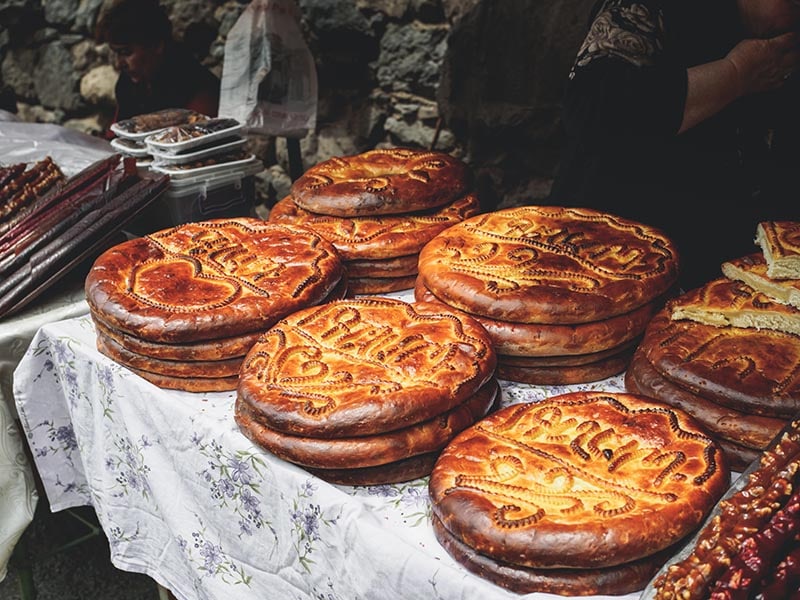
Gata is a sweet bread, yet, this name is more likely to describe the dough base. With the same sweet dough, Armenian people will make various shapes and sizes; all of them can be called Gata afterward.
For example, you can see a Gata with a shape of big round bread or mini croissant-like ones. Overall, Gata will typically offer vanilla-y, buttery, and mildly sweet taste. Rich and crunchy nut fillings will also be added for more flavors.
There is a fascinating Christmas tradition with this Gata in Armenia. People in this country will put a coin into the dough before baking. Ones who receive the bread with the coin inside are believed to have good luck.
Gata can also be a festive Candlemas treat or daily food, and my recommendation for you is to pair the bread with tea or coffee. Their flavors match perfectly with the others.
12. Topik/Topig (Chickpea And Potato Ball/Chickpea Dumplings)
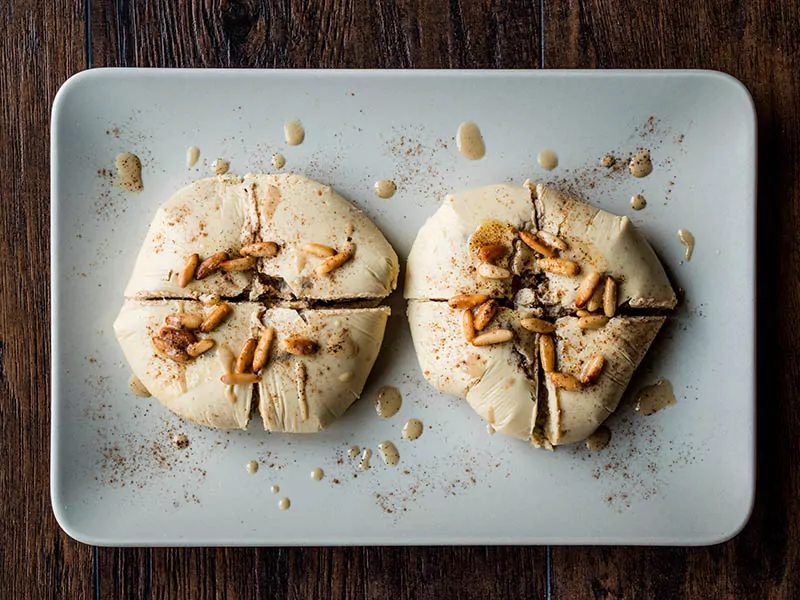
Not only a vegetarian-friendly treat, Topik/Topig is also completely vegan. This Armenian specialty can provide the eaters’ with tons of nutrition from fresh, fragrant, and non-meat components.
Thanks to the diverse filling options, it’s also a fantastic idea for never-boring Armenian lunches. To enhance the taste profile of the food, dried fruits (blackcurrants), nuts, and condiments (pimento, cinnamon, sugar, salt) are also added.
In this beautiful country, they love to have Topik for the mid-Lent celebration (also known as Michink). Therefore, if you want to find the best Topik, you should manage your time and visit Armenia on this occasion.
13. Manti (Dumplings)
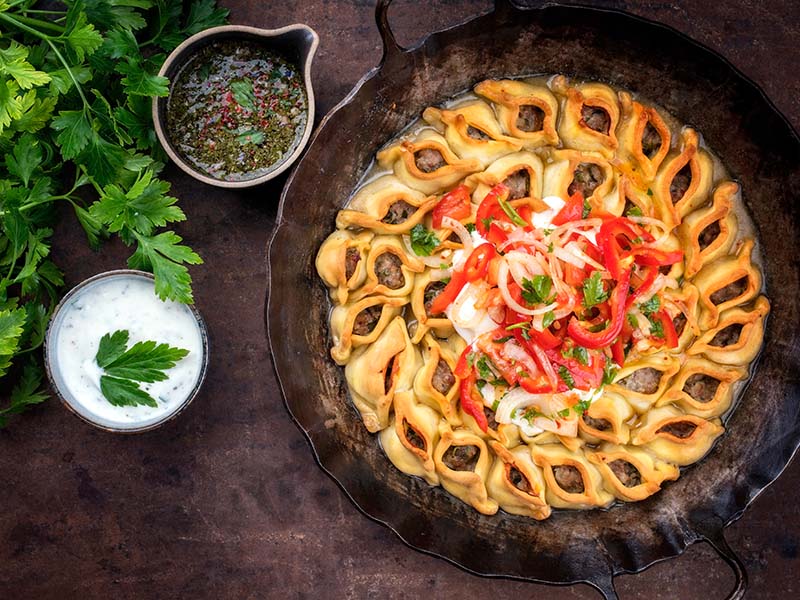
If Topik is not your thing, then this Manti might be a favorable consideration. The origin of the food is quite exotic and, let me make it short. The ancient variation of Manti initially appeared thanks to the cultural interaction between the gastronomy of Mongols and Armenians.
After a time, the Turkish brought it back to their country and started to call it ” Manti,” and the first official recipe for Manti was created and developed.
A standard Manti will be “soaked” in the sauce until the flavors absorb deeply into the dumplings. Don’t hesitate to ask for yogurt and garlic if the waiter forgets to give you that. Those are the best match when it comes to Manti’s companions.
Who can deny such a delicacy like this Armenian Manti?
14. Baklava/Pakhlava (Sweet Layered Pastry)
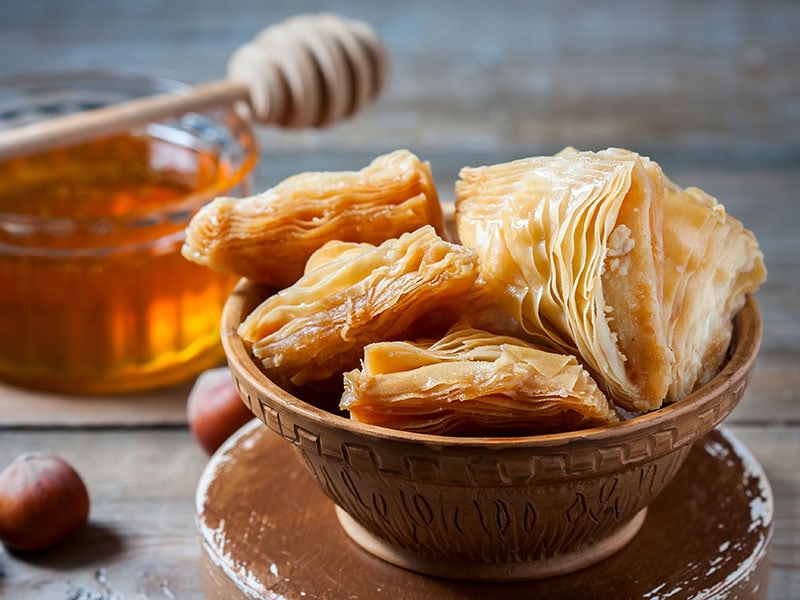
Pakhlava is an easternmost Armenian region’s specialty and is widely favored by people from all over this country. The Western variation of Pakhalava is called Baklava, which is somehow similar.
Baklava is filled with honey, nuts (walnuts), and syrups that pair well with the flaky, paper-thin dough. Every layer of the sweet pastry treat is coated with the mentioned ingredients, so you won’t have a bland bite when eating the food.
This Armenian delicacy is both a must-have treat on special occasions in Armenia and a daily dessert that you can easily find everywhere every time.
One good news is the food has several variations in Uzbekistan, Turkey, Iran, and Greece, so you will have more chances to give the food a go.
Armenia Meat Dishes
Thanks to the cool climate year-round, Armenia’s livestock industry and agriculture are relatively developed. As a result, in addition to the dairy products mentioned above, meat dishes are also prevalent in this nation. Here are a few ideas I have for you.
15. Khash (Winter Soup)
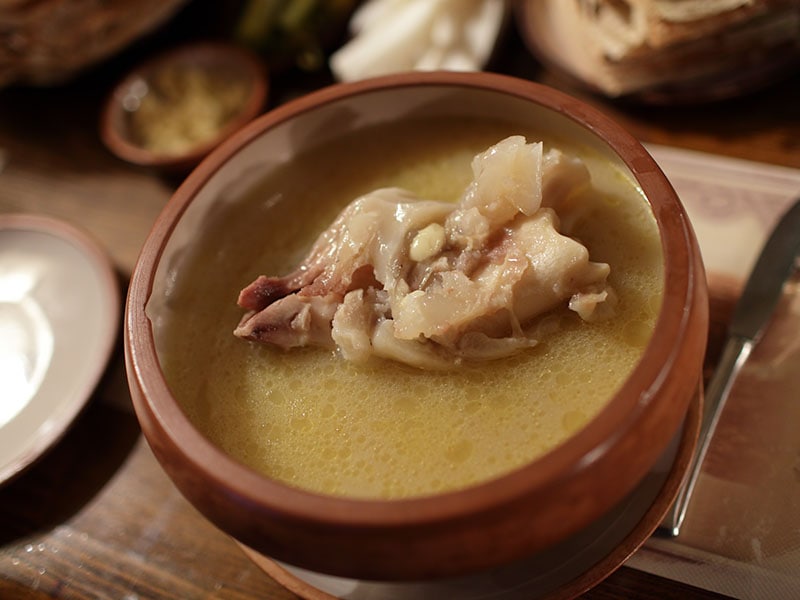
Khash is another Armenian-style breakfast suggestion for you on this list. This bone soup is an authentic Armenian recipe before it was widely spread to Caucasus and Transcaucasia areas.
The name of this dish, Khash, is originally derived from the term “khashel” (meaning “to boil”), and the “boiled components” in this dish are cow/sheep legs, head, and intestines.
Because of those ingredients, Khash was first thought of as a soup for the poor (those were typically the leftover parts of cattle after the old meat sacrifice tradition).
To enjoy Khash in the actual Armenian people’s way, you should visit this country in winter and prepare some lavash as a side dish.
The way Armenians enjoy their Khash is a cultural beauty that you won’t want to miss.
16. Kufta/Qyufta (Stuffed Meat Balls)
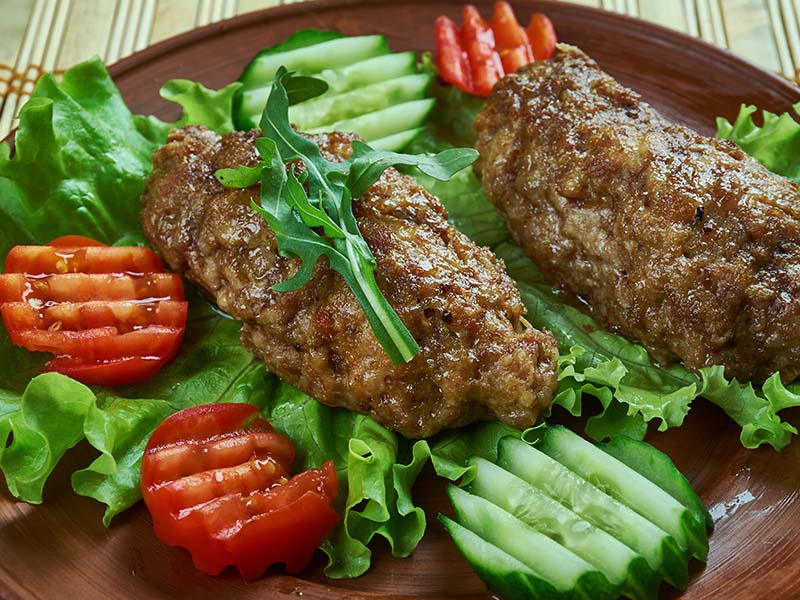
Qyufta or Kufta describe a dish that includes minced meat formed into balls and grilled/processed before serving. The earliest record of this treat comes from an early Arabic cookbook, so it can tell that Kufta doesn’t have an Armenian root.
There are many variations of Qyufta in other countries, yet, everyone has to admit that the Armenian varieties have their own goodness. With only beef, butter, egg, pepper, salt, and onion, this food can still capture your appetite from the first bite.
In Armenian, you will have many options to enjoy Kufta. From grilled, boiled before frying to having it raw, anything will work and certainly won’t leave you disappointed.
17. Tolma/Dolma (Stuffed Grape Leaves)
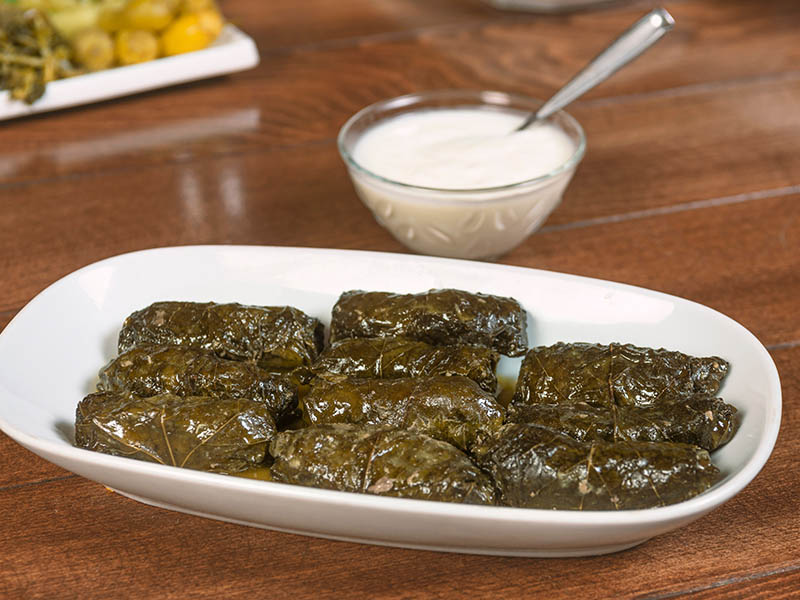
Tolma is not an authentic Armenian delicacy, yet it has been included in this country’s menu for centuries so that you can find no less than 50 variations of the food here. Seafood, offals, fruits, meat, you can expect everything goes in your piece of Armenian rolled treat.
For the most basic variety of Armenian Tolma, it will have minced beef, rice, chopped onions, herbs, and several other condiments like black peppers. Eggplant, tomato, and pepper can also be a choice if you prefer a vegan option.
It is time to know more about Armenian Tolma!
18. Tjvjik/Tzhvzhik (Fried Beef Liver)
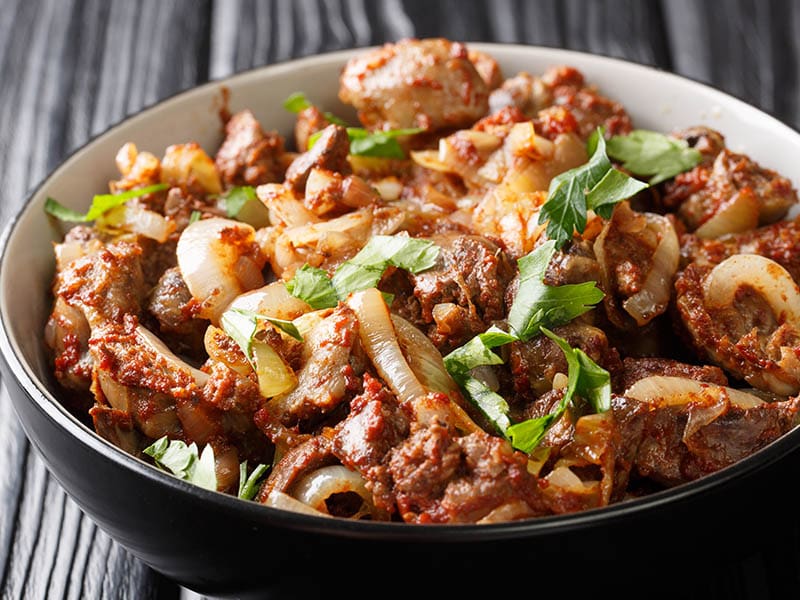
Onion lovers will absolutely crave this treat since it is an irreplaceable ingredient on a standard portion of Tjvjik (or Fried Beef Liver). The beef (or sometimes lamb) livers will be sliced and marinated with plenty of onion, salt, and pepper before frying.
Tjvjik in Maltese means “frying on fire”, which partly tells you about this dish’s processing method. The beef liver slices will be deep-fried until turning to a darker color and form a crunchier texture.
Although Tjvjik is palatable, it is not widely sold. As a result, it will be pretty hard to find a place to try the treat. In that case, you should ask for local people’s help.
19. Khorovats (Grilled Meat Kebabs)
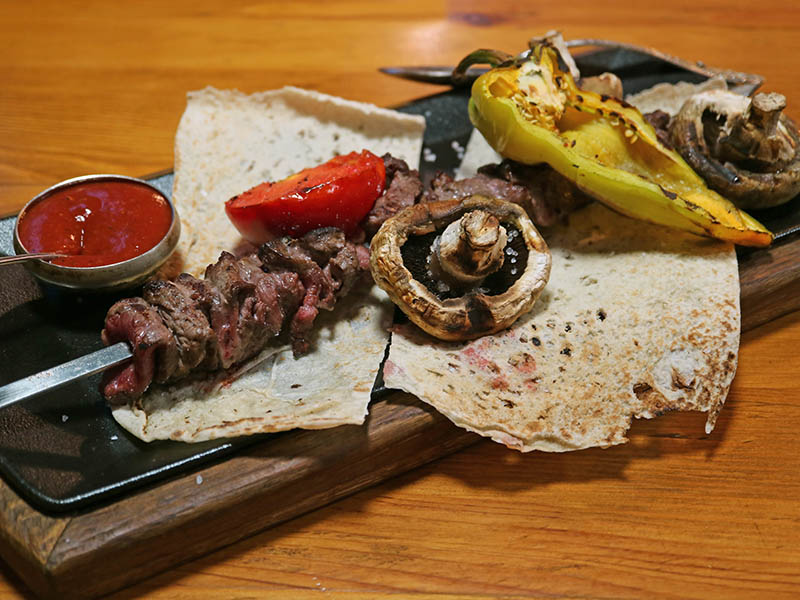
The Russian cuisine’s version of Shashlik (also a kind of grilled meat) might be famous, yet the true origin of this Grilled Pork Kebabs dish is quite unclear. Some unofficial information claims that the original version is this Khorovats, and it truly originated from Armenia.
No matter its origin, everyone needs to admit that the Armenian Khorovats are distinguished and delicious. The dish can be made of any kind of meat you might have in mind, lamb, beef, pork, veal, fish, chicken, and even “fake meat” (eggplants).
There are various ways to prepare the Khorovats meat (marinated or not), the result will still be great after all.
20. Basturma (Dried Cured Beef)
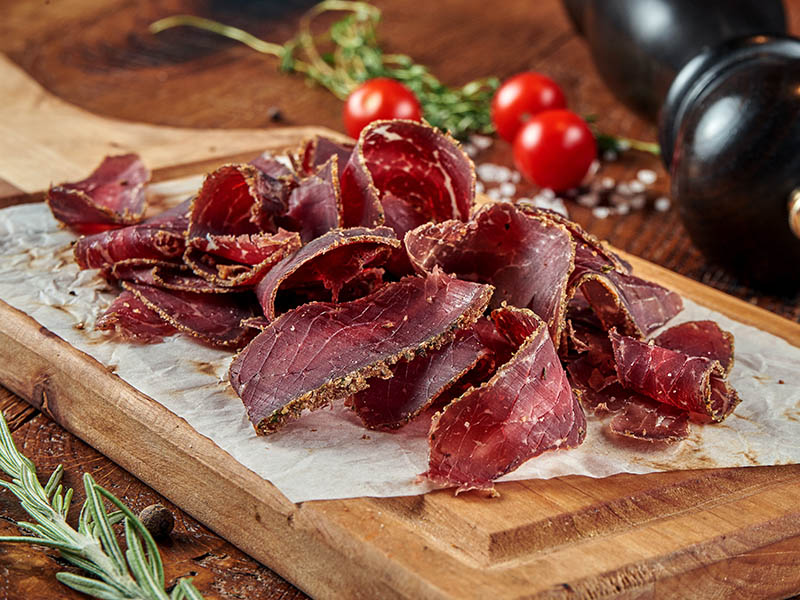
If this Armenian-originated Basturma makes you think of Italian Bresaola, it is reasonable since they do have some similarities. For example, they are both air-dried meat and typically served with bread.
The pairing of raw beef (or lamb) filet with tons of condiments like Shaiman (fenugreek powder), cumin, turmeric, and red pepper do a great job that will blow your mind.
Don’t miss the favorable pickles, onions, or baguettes to match it with your meat. They work phenomenally.
The tradition of eating Basturma might be different between the Armenian communities. For example, those Armenians living in Palestine will serve this treat on New Year’s Eve while some others love enjoying the food year-round.
21. Suǰux (Dried and Fermented Sausages)
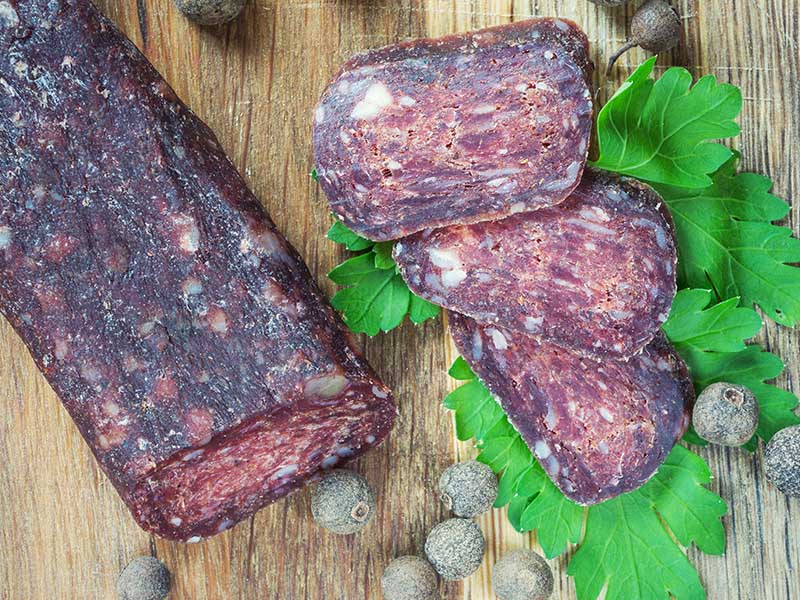
You can expect a well-balanced taste and an appealing aroma from this next meaty treat, Suǰux. The treat is also an ancient Armenian recipe (started from Middle-Easterners), and the idea to create Suǰux quite resembles Basturma.
The huge noticing difference between them is Basturma calls for a whole big chunk/steak of raw meat while Suǰux needs ground/minced proteins (beef/lamb). Those meat parts of Suǰux will be put into thin membranes and form a sausage shape.
On the other hand, the use of spices is quite similar. If you love the flavors of Basturma, you should also give Suǰux a go. Specially served for special events (like New Year), so if an Armenian ask you whether you want to taste Suǰux, you should say yes.
22. Lahmacun/Lahmajun (Armenian-style Pizza)
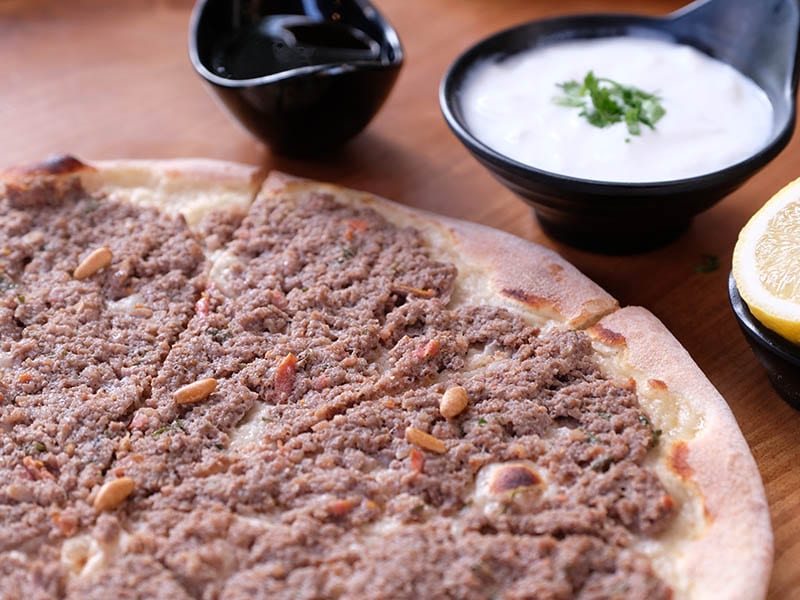
There is no official document that talks about which country this Lahmacun came from, all I can guarantee is the dish originated in the large regions of the Caucasus and the Middle East.
Its name, Lahmacun, means “meat with dough” in Arabic which also describes the components of this treat. A piece of Lahmacun will include a thin layer of dough (looks like pizza) and evenly spread spicy beef topping.
Crispy crust, spicy toppings, and some aromatic hints from chopped onion, garlic, and crushed tomatoes are what is waiting for you in your first bite to try this Lahmacun. Believe me; it will be incredible!
23. Bozbash (Meat Stew/Soup)
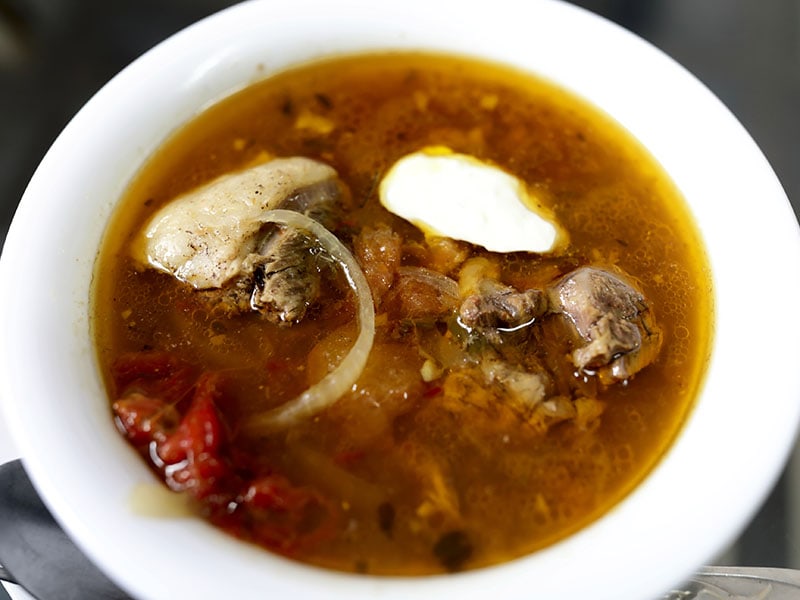
The critical ingredient of Bozbash is lamb which usually matches with beans, root veggies, and herbs for more flavors. The name of the food originated from Azeri Turkish words that are Boz (means “light gray”) and Bash (means “head”).
Besides Armenia, Bozbash is also a traditional dish in Azerbaijan and Iran.
But that’s not all. There are some other variations of Bozbash; one of them is Shoushin Bozbash (made of lamb, mint, quince, and apple), which is not very famous to the visitor. Yet, all of them will pair well with flatbread and pickles, so you should give them a try!
Armenian Desserts and Snacks
What I like best about Armenian signature desserts is the rusticity of their recipes. In Armenian, you won’t find any thick frostings or loaded pastries. All of the flavors in those delights will be balanced and harmonious, just enough to pique your attention.
24. Armenian Sharots/Churchkhela (Grape and Walnut Candy)
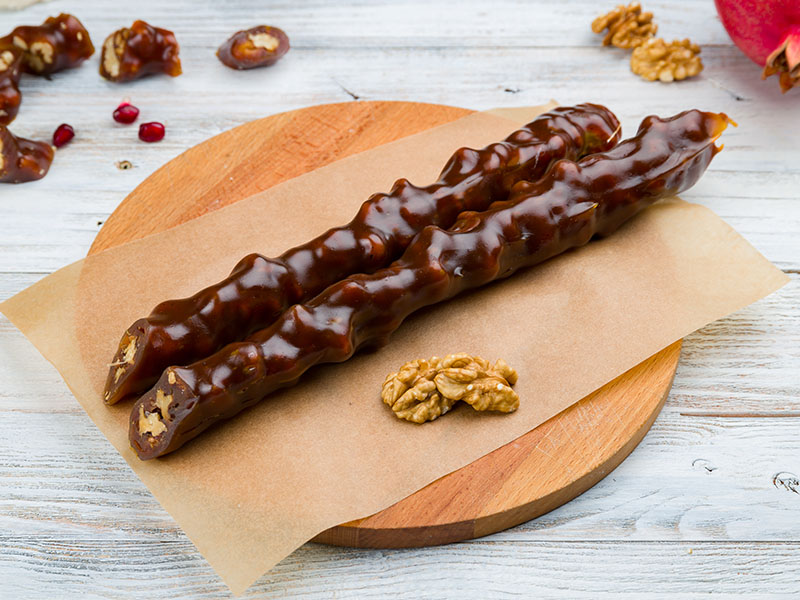
Don’t confuse it with the previous Suǰux; this is a sweet dish called Armenian Sharots (or Churchkhela). Surprisingly, Armenian Sharots / Churchkhela is considered a healthy treat as it contains fewer cholesterol and minimal bad fats.
The idea to create the treat is quite simple since all you might need here is nuts, grapes, apricots, or pomegranate. After that, the cooks will make them into strings, then coat the strings with a thick, dark syrup layer.
25. Dried Fruits
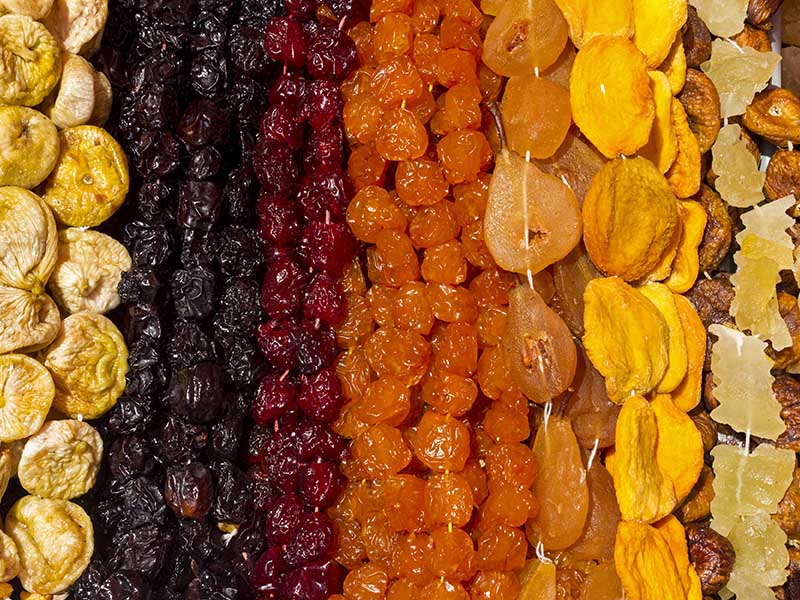
If you don’t want the fruit to be coated in sugary syrup, you should opt for these gorgeous dried fruits. This treat is humble street food in Armenia, and people in this country started to make it a long time ago. You can see them selling it almost everywhere.
You can see them make dried treats from all sorts of fruits, but I highly suggest you try prunes, peaches, cherries, plums, and figs. Those are the most favored by my Armenian friends here.
26. Popoki Murhaba (Green Walnut Jam)
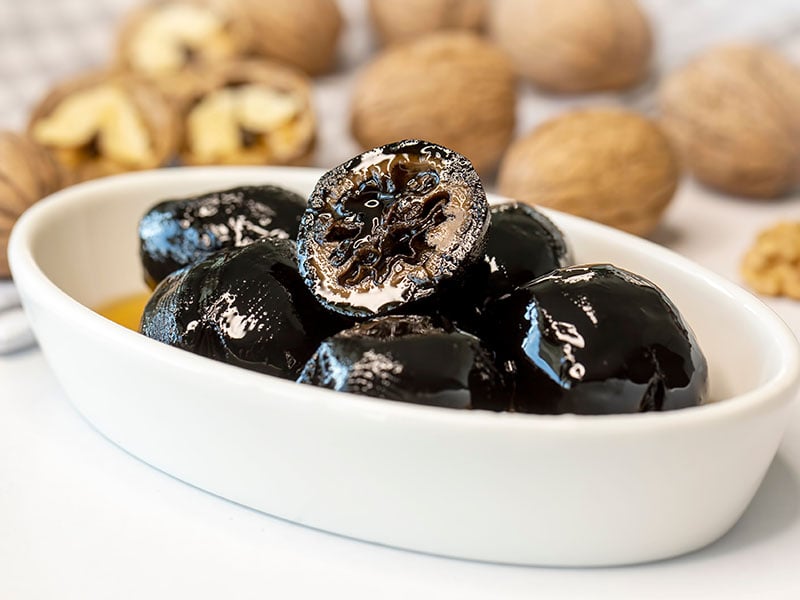
Even the pickiest eater will love this walnut jam. It is considered the best dessert in Armenia, and you should experience it to verify my word. Popoki Murhaba is quite versatile so you can have it with almost anything other sweet treats, from bread to Matzoon.
This sweet treat is not only palatable, but it also offers many health benefits (if you eat it in an appropriate amount), such as improving concentration and supporting the immune system.
Armenian people will use whole young/baby walnuts to create this exotic jam since they will be softer and provide iodine (a good compound for the thyroid gland).
27. Khourabia (Butter Cookies)
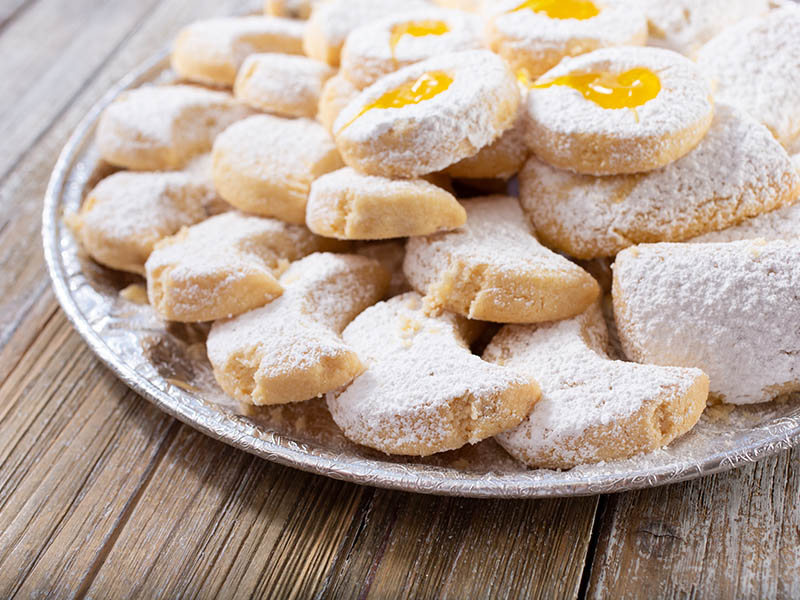
Khourabia is an Armenian-style butter cookie that has a long history. In the 10th century, a kind of cookie appeared in an Arab cookbook, and people believed that it was the ” mother ” of these butter cookies..
Later on, under the Ottoman period (in 15th century), the shortbread cookie was officially created with all the ingredients you can find in today’s variation.
Khourabia is typically prepared with egg, walnut, and cinnamon in Armenia and is a special dessert in Christmas, New Year, and Easter celebrations. They will sometimes be shaped into the horseshoe shape to represent the meaning of health, prosperity, and wealth.
Other Armenian Dishes
Is that all? Those above are all delicious, but they are not everything you can expect from such a rich culinary culture as Armenian. Look at some other Armenian delicacies and consider adding them to your foodie’s list now!
28. Harisa/Harissa (Grain Porridge)
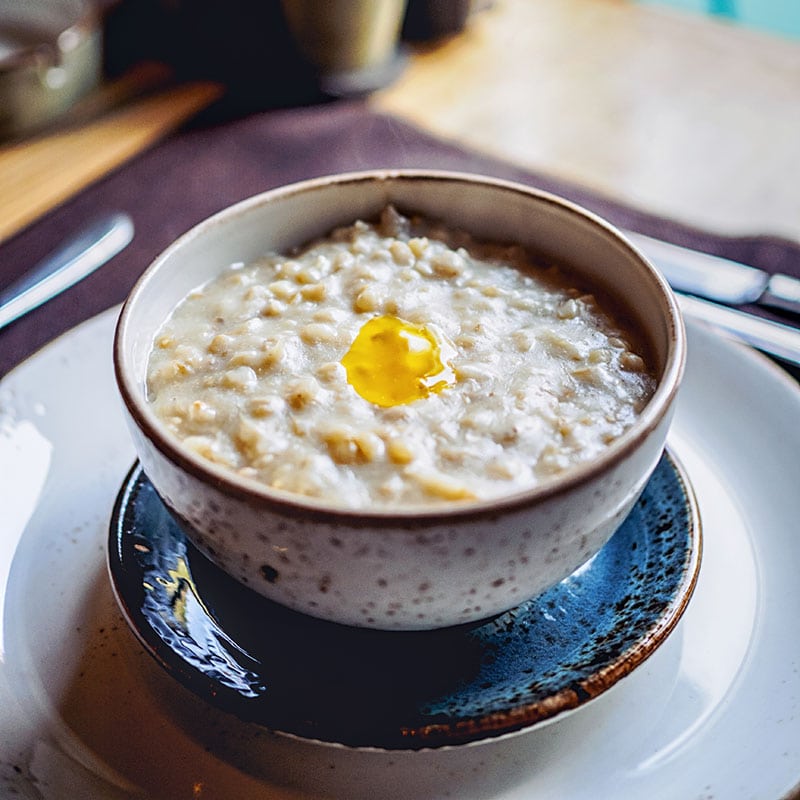
Want something lighter? This national kind of porridge from Armenia will be an excellent choice for you. Besides the unchangeable Korkot part (cracked roasted/dried wheat), there are two main options for you on what goes in your Harisa: vegan and non-vegan.
If you want to have something light and no meat, you can opt for the vegan Harisa, and the chef will offer you a bowl of thick porridge and herbs. Or else, they will provide fatty and nutritious proteins (chicken, lamb).
One notable thing about Harisa is that people in Armenia usually serve it as food for the poor (maybe because the treat is both filling and heart-warming). Furthermore, the porridge is also a quintessential part of many sacred Armenian occasions (Easter or others).
29. Ghapama (Stuffed Baked Pumpkin)
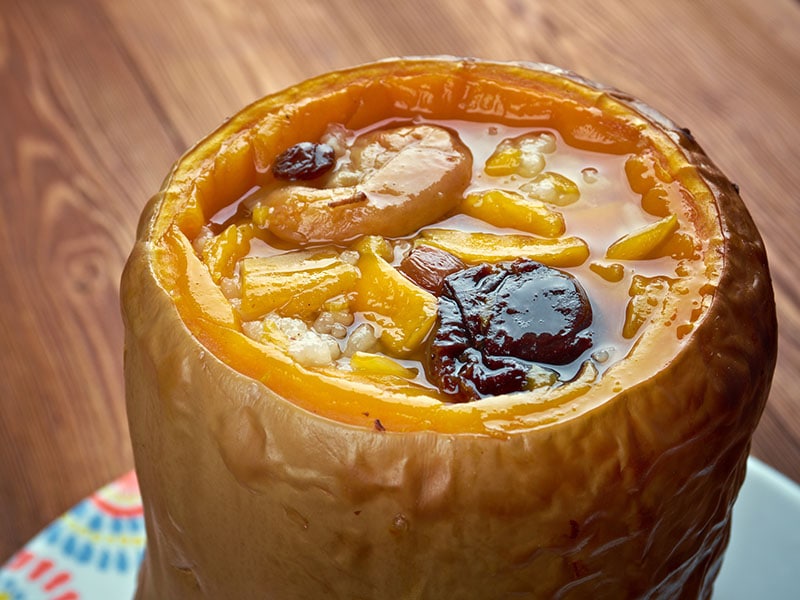
The following authentic Armenian recipe I want to suggest is this Ghapama. Trust me, Armenian people love this food a lot, and you should experience it once to know the reason.
A regular batch of Ghapama consists of plenty of things. Dried fruits (plums, dates, prunes, raisins), nuts (chopped almonds), and rice will be filled and cooked inside a medium-sized pumpkin.
Thanks to that, the juice/extract has a fusion of sweet and savory aromas that complement the other components.
Ghapama is a must-have treat on any Armenian occasion, from traditional Christmas (on January 6th) to New Year’s Eve. They believe that their festive meal cannot be completed without a portion of this Baked Pumpkin dish on the table.
30. Kalamar Dolma (Stuffed Calamari/Squid)
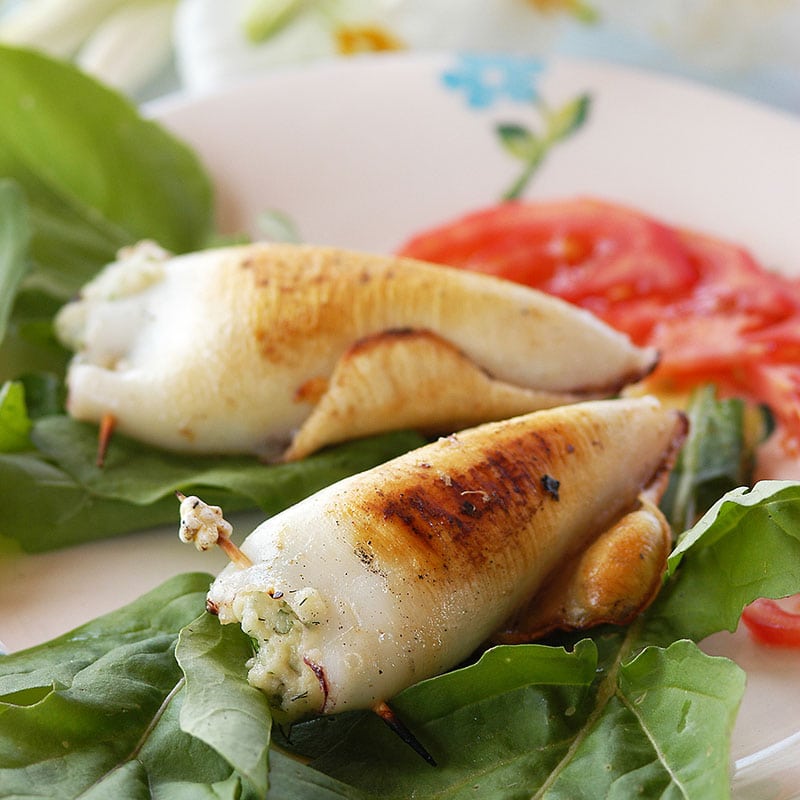
Although Armenia is landlocked, they still have several exquisite seafood dishes. This Stuffed Calamari dish is most famous in Turkey and Greece and significantly influences Armenian cuisine.
A standard piece of Stuffed Calamari will include a mixture of rice, black pepper, mint leaves, parsley, tomatoes, and salt to taste. Slather a little bit of everything together, and the most harmonious flavor will be created!
31. Midye Tava (Deep-Fried Battered Mussels)
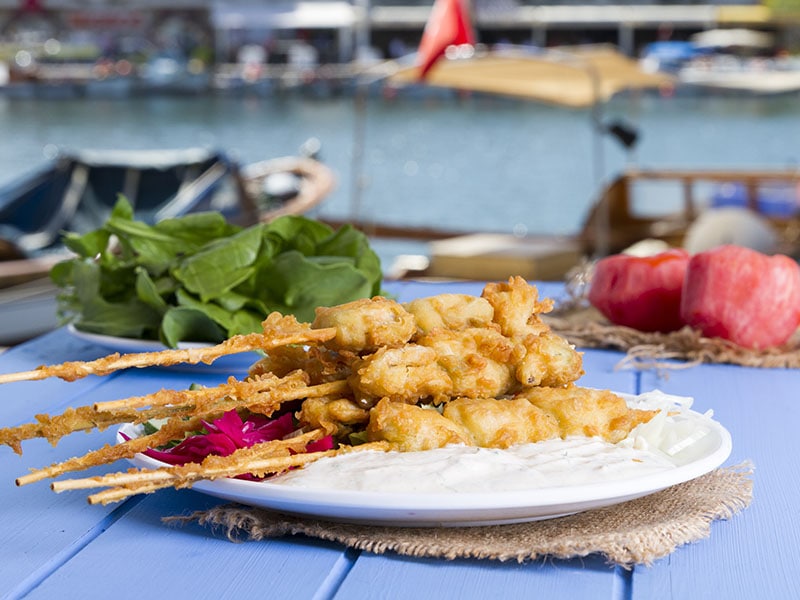
Midye Tava is a battered mussel treat that has its root in Turkey and is also loved in Armenia. The food requires almost no effort to make since all the cooks should do is batter the fresh, rich mussels before deep-frying them in sizzling oil until crispy.
Based on that, Midye Tava can be found on various street vendors, so you can quickly grab one to try. Who doesn’t love matching a crunchy, fried dish with tangy tarator sauce as the side?
32. Eech/Itch (Bulgur Salad)
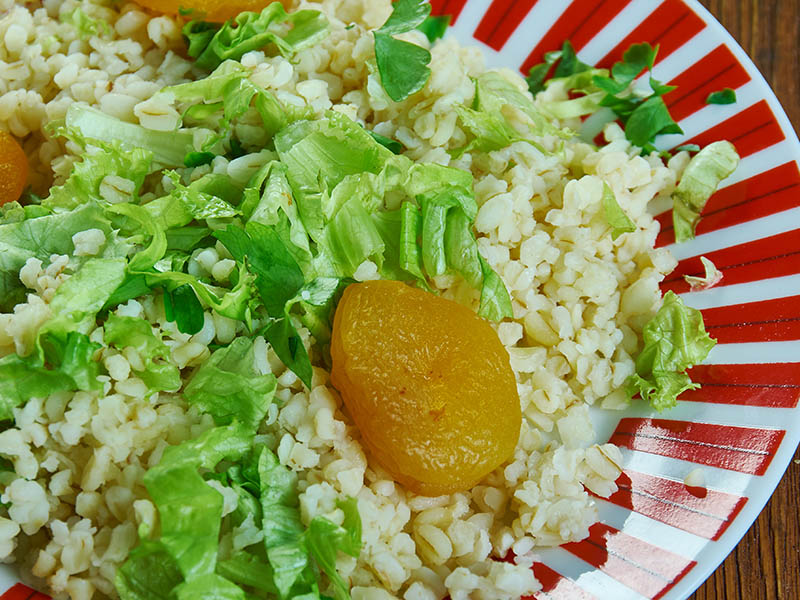
It would be best to offer you a fresh and healthy salad to end today’s recommendations. Eech is a typical Armenian dish in Lenten and is also loved by many people as a daily delicacy.
You can toss bunches of greens/veggies into this salad (parsley, tomatoes, onions, bell peppers, and paprika), free to choose anything you like since there is no limitation set. Mix them well with crunchy and aromatic Bulgur (parboiled groats) since it is the star.
Never miss a piece of Lavash, crackers, or pita bread for a starch base. The last step is to simply add a splash of olive oil and lime juice onto your plate of Eech and enjoy your food!
Have A Good Meal!
From ancient times to the present, Armenian gastronomy has been regarded as a diversified and rich cuisine with different specialties. Therefore, grab your chance and allow yourself to experience those recommendations once.
Hopefully, the above suggestions will help you understand Armenian gastronomy. Please share the article with your loved ones if you find my shared information today helpful.
In addition, feel free to share your thoughts on the foods in the section below. Every contribution will be a tremendous inspiration for me. Bari akhorzhak!
